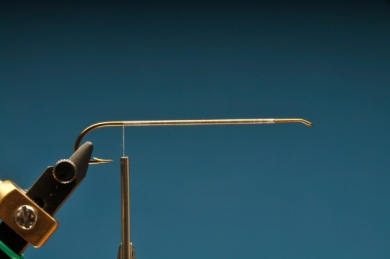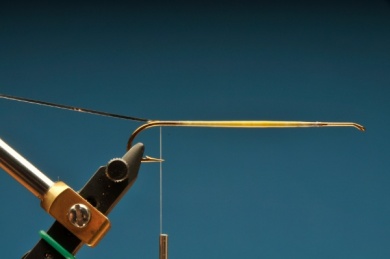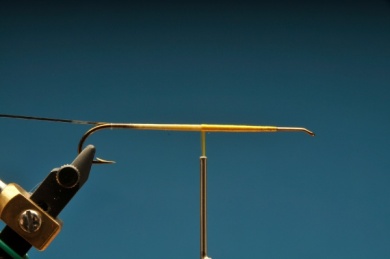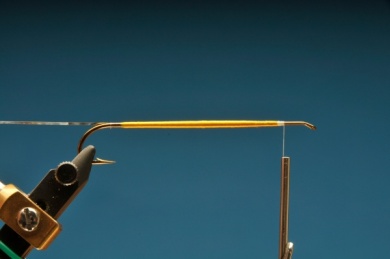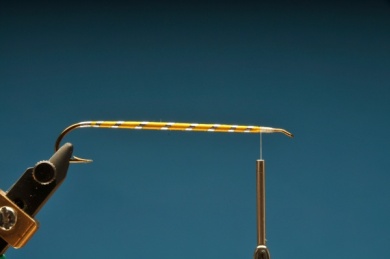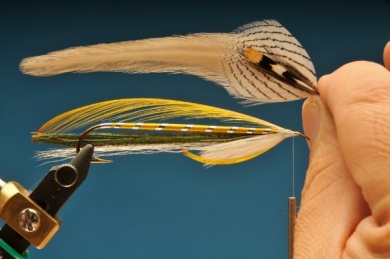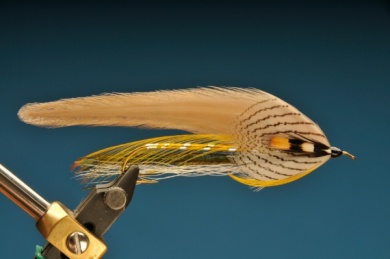Gray Ghost is a great name for a fly. A name that may bring back memories of salmon and brook trout to many fishermen, and also of the green waters of the Curruhué River or the blue ones of the Traful in the distant Patagonia.This is a fly that has defeated time, trends and the changing taste of fi View more...Gray Ghost is a great name for a fly. A name that may bring back memories of salmon and brook trout to many fishermen, and also of the green waters of the Curruhué River or the blue ones of the Traful in the distant Patagonia.This is a fly that has defeated time, trends and the changing taste of fishermen, an aspect it shares with the Adams and Pheasant Tail. Only good flies, those that really catch fish, can stay with us during so long. And there is no doubt that the Gray Ghost is one of them.It is an effective fly, regardless of the way we use it. It is specially fit to imitate the fish trout feed on; like the smelt, the fish that served as model for this pattern, or the local pejerrey in Patagonia.Around the year 1924, Carrie Stevens, the wife of a Maine fishing guide, tied the first ones that soon gave place to the birth of a big family of classic streamers. Those pioneer Gray Ghosts were raw and simple, had no silver pheasant shoulders, jungle cock cheeks nor golden pheasant crests that Stevens added later, while she leaded this model up to its actual perfection. Nevertheless, Gray Ghosts have shown its effectiveness for catching big trout since day one. And they keep doing that every time we tie one to the leader.Sadly, commercial versions of this fly are frequently poor and don’t resemble the original Gray Ghost, that is why we bring it back here in all its glory and splendor.Photos: Eduardo G. Gimenez
Move the mouse over the image to zoom in the fly.
Touch the image to zoom in the fly.

List of materials
Tying MaterialsHook: Ideally, a Partridge Carrie Stevens CS15, size 4, or any extra long streamer hook.Thread: 8/0, white and black.Body: orange silk floss.Ribbing: medium sized silver tinsel.Side line: 6 peacock eye fibers.Belly: Bucktail or white goat hair.Throat: White rooster fibers and golden pheasant crest.Under Wing: golden pheasant crest.Wing: 4 pale or mid gray saddles.Shoulders: silver pheasant feathers.Cheeks: Jungle cock. View more...Tying MaterialsHook: Ideally, a Partridge Carrie Stevens CS15, size 4, or any extra long streamer hook.Thread: 8/0, white and black.Body: orange silk floss.Ribbing: medium sized silver tinsel.Side line: 6 peacock eye fibers.Belly: Bucktail or white goat hair.Throat: White rooster fibers and golden pheasant crest.Under Wing: golden pheasant crest.Wing: 4 pale or mid gray saddles.Shoulders: silver pheasant feathers.Cheeks: Jungle cock.
Steps
Step 1
Make an even base with the white thread.
Step 2
With the same white thread we should make a tapered body, tying at the same time the silver tinsel. It is better to tune up the tip of the tinsel so that it does not show when it is bent.
Step 3
We should withdraw the white thread and make a silk floss body, going from the front to the back, and again towards the front. We should connect again the white thread tying the floss and cutting the remnant. The floss body is tapered due to the base of the thread. With a mirrored polished metal bar we should smooth the floss carefully, flattening the parts that remained too high.
Step 4
Wrap the tinsel towards the front, making a tag of 4 joint turns first. Then take the tinsel, spiraling, to the front. The tinsel turns separate a bit more at the thick section of the body, so that the optic is effect is pleasant and looks as if these were at the same distance.
Step 5
Tie six peacock strips that will shape the side line, and a bucktail or goat strap that will take the shape of the minnow belly.
Step 6
Tie a thick bundle of soft white rooster fibers, right before the hair bundle of the same color. Then, a golden pheasant crest at the upper section of the body and another one on the ventral part. The correct lengths can be seen in the picture.
Step 7
Carrie Stevens used to make the wings in two parts, sticking together two rooster saddle feathers to one silver pheasant feather, and over this she would stick the jungle cock feather. She shaped the right and left wing separately.
Step 8
The right and left wing are tied separately at each side of the fly and are placed to the side rather than at the top. In the picture we have lifted them a bit so that the body and golden pheasant crest glow can be fully appreciated.
Step 9
We finish the fly with a conic head, making sure it is not too long and applying several layers of lacquer.
